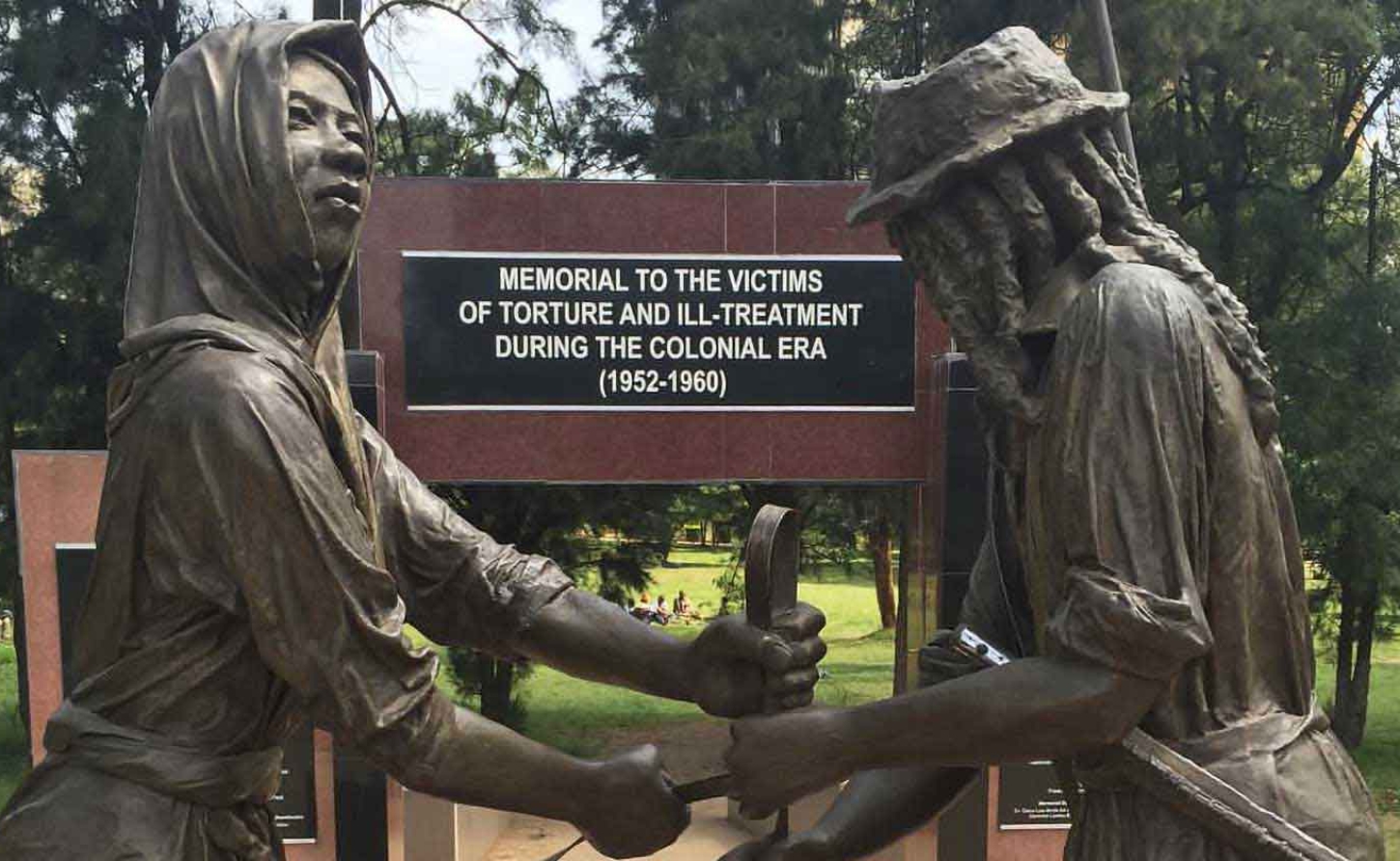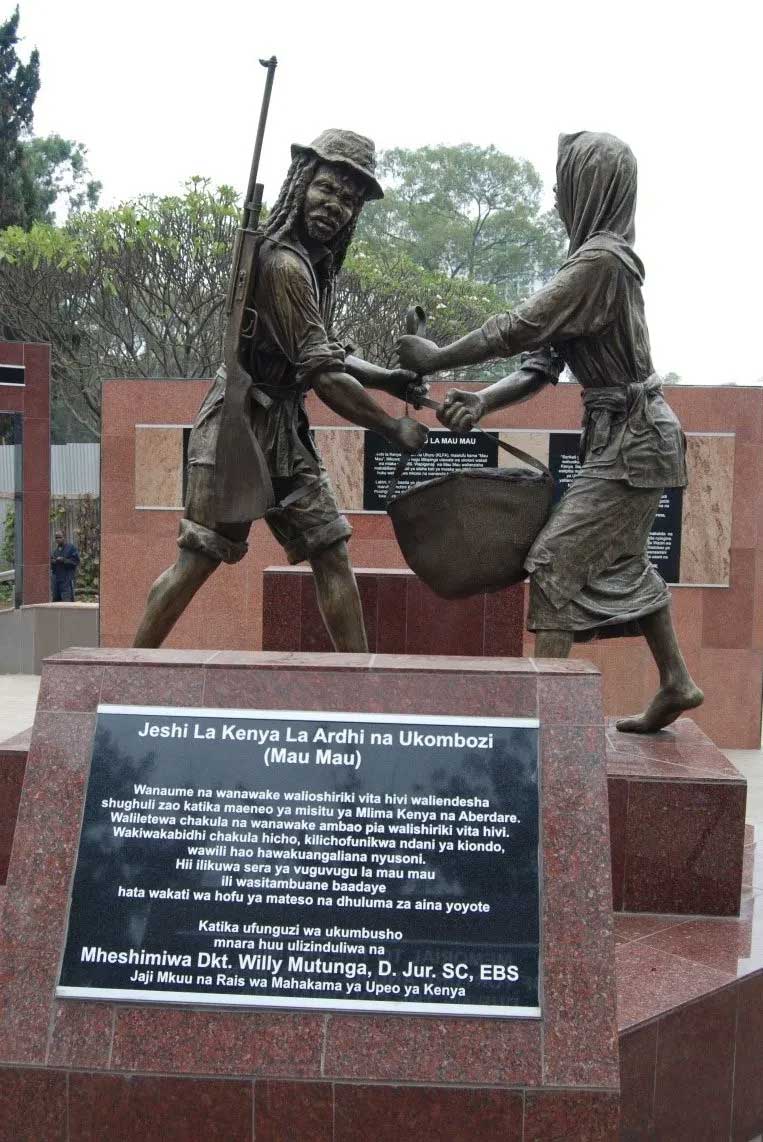AFRICA | Kenya’s female freedom fighters were the silent heroes of the anti-colonial movement

Each year in Kenya, familiar faces are feted at the national remembrance of the country’s heroes and heroines. Dedan Kimathi is arguably the most commemorated of figures. As one of the most prominent leaders of the anti-colonial Land and Freedom Army, Mau Mau, he has become a symbol of the bloodshed for independence.
Field Marshal Muthoni Kirima also features. She avoided British capture for 11 years, hiding in the forests of central Kenya, and was the only woman to reach the status of field marshal in the Mau Mau. So it is unsurprising that the then deputy president, Rigathi Gachagua, and other top government leaders attended her funeral in September 2023. Kirima died at the age of 92. The surviving Mau Mau generation is now declining, but many of those who fought or grew up during the 1950s rebellion live on.

Historians estimate that between 1952 and 1960, British colonial forces detained 80,000 Kenyans, hanged over 1,000 suspected rebels, and forcibly resettled approximately 1.2 million civilians in colonial “villages”. As its control of the colony dwindled, Britain used brutal measures including torture, forced labour and collective punishment to suppress anti-colonial dissent. It wasn’t until 2013 that Britain finally acknowledged these human rights abuses, having been exposed in the landmark High Court hearings (2011-2012).
These discoveries have instigated a flurry of historical examination from historians and activists to assess British brutality in Kenya. This work has largely focused on the detention camps incarcerating freedom fighters and Britain’s military campaign. But what of the civilians, mainly women and children, whose lives were disrupted and threatened by their forced resettlement into guarded villages? In 2018, I set out to conduct research in Kenya to capture these important stories.
The oral histories of women Britain forcibly resettled in the 1950s offer important insights into life in these villages. They challenge the evidence in the colonial archive. Archival records lack rich or diverse information about the day-to-day experiences of those who lived in the villages.
Brutal history
Between 1954 and 1960, an estimated 1.2 million Kenyans were forcibly removed from their homes and forced into colonial “villages”. This form of collective punishment was to work in tandem with the mass detention of suspected freedom fighters. Torture and forced labour were practised widely.
The High Court hearings forced Britain to release its “migrated archive”, which consisted of over 20,000 files pertaining to 37 of its former colonies. These records had been secretly removed during the process of decolonisation. The archive corroborated survivors’ testimonies of torture, sexual violence and mistreatment in the camps. These new histories of colonial violence expose the limits of international human rights laws in the wars of decolonisation.
For its audience back home and across the world, Britian’s Colonial Office circulated images of the colonial villages, images depicting community, safety and even joy. Photographs of children playing on a make-shift slide, women laughing in a sewing class, a village headman smiling in the local shop. But how well did these depictions represent lived experiences?
Women’s stories
Over the Spring of 2019, I interviewed several women who had at some stage of the 1950s been forcibly resettled. Their ages at the time of interview ranged from 69 to 105 years old.
Most women were put in contact with me during my time spent in the central region of Kenya, building up relationships with community leaders, cultural heritage practitioners, and through friends. The interviews conducted for the project mainly took place in the participant’s homes. Stories and memories shared over a warm mug of chai (tea).
Several themes emerged from the interviews with women who experienced forced resettlement.
Firstly, surveillance. When the British colonial government declared a state of emergency in October 1952, it was concerned by the growing anti-colonial sentiment and initial attacks made by Mau Mau fighters. By 1953 it became apparent to colonial officials that women in the Gikuyu, Embu and Meru regions were playing a significant role in sustaining the forest fight. Much of the Mau Mau strategising took place deep in the forests of Mount Kenya, with women supplying food, ammunition, and intelligence to the armed combatants.
Women were characterised as the eyes and ears of the movement and concentrating them in colonial “villages” ensured the colonial state’s eyes and ears were fixed upon them. As one interviewee explained to me:
everything had changed … you do not play, you do not make a noise … We see the Home Guards up there.
Women and children in the villages knew they were under constant watch from the colonial state and its guards, and they regulated their own behaviour accordingly.
The villages, while depicted in propaganda as lush green spaces with happy villagers, instead followed similar patterns to the detention scheme. Most villages were surrounded by barbed-wire fences, or trenches filled with sharpened sticks.
These were well fortified spaces to keep out the Mau Mau and keep in those who might support them. Security posts were often situated at the top of hillsides facing down on the huts of inhabitants. Security officials monitored all movement.
As one interviewee expressed it: We looked like caged people. Like people in prison.
The punishments inflicted if rules were broken raise a second theme in these interviews: brutality. Violence and coercion came in several forms. If a family was suspected of continuing to aid forest fighters, guards set the roof of their hut ablaze.
Village-wide curfews were put in place and people were locked inside their homes for extended periods of time. They were denied food. Public beatings were inflicted. People were executed. Many women sustained severe bodily harm when being interrogated at the security post. These punishments often extended to sexual violence.
But the British colonial state could not break the women’s spirit. Women spoke of the food they shared with one another. They recalled caring for children who had been orphaned. Women set up trading networks that sustained the community and prepared them for life post-conflict. Many persisted in their support of the Mau Mau, sneaking food out of the village, breaking the fences so forest fighters could get into the village site, and strategising under nightfall.
With military operations subduing from 1956, Britain slowly began releasing families from the colonial villages. Some women were allocated land elsewhere, others were assigned land that had once been part of that village. For many then, the memories of forced resettlement remain ever present.
Silent heroes
During this research I often received a similar response from women: “you want to speak to my husband, he was in the forest, he was detained, he was one of those heroes”.
Collectively, women who faced forced resettlement for their participation and connection to the liberation movement have tended to marginalise their own significance.
Yet, in many ways, women across the central region of Kenya embodied the conflict. Their day-to-day lives became part of the battlefield. It raises a challenge for scholars to recognise all the experiences of colonialism in Kenya. To extend our anti-colonial histories beyond Mau Mau, also.
Bethany Rebisz is a Lecturer in the History of Modern Africa, University of Bristol
The original article was published in The Conveersation on October 19, 2024 -and is reprinted under a Creative Commons licence.
-30-

 Ar
Ar  En
En